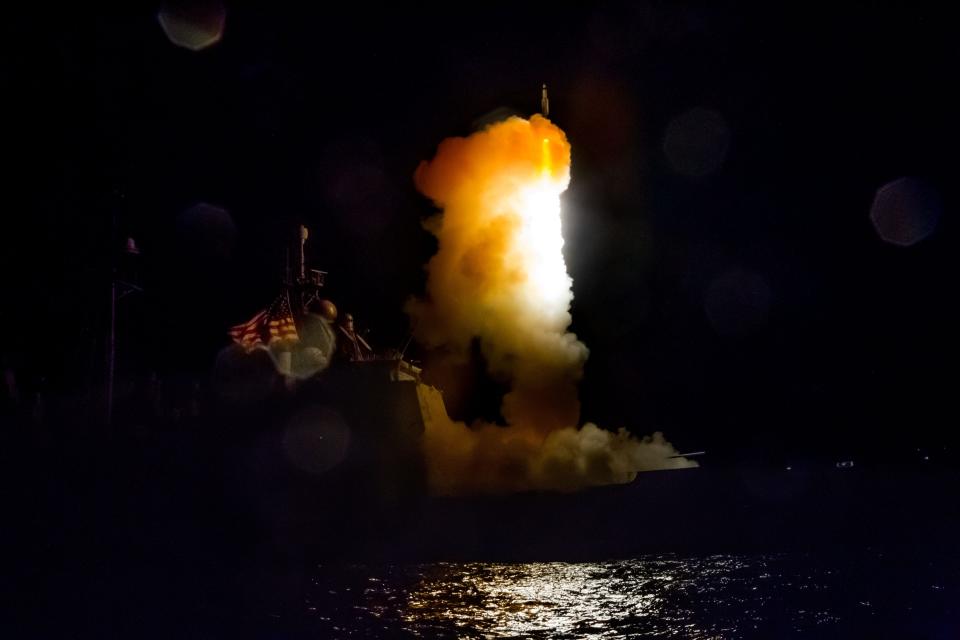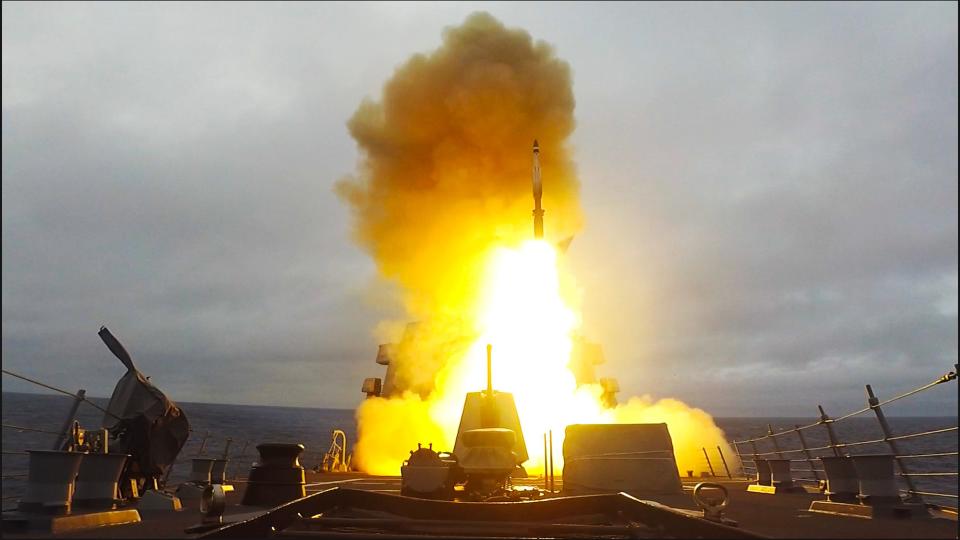The US Navy wants a lot more of a missile that just recently scored its first kill to counter Pacific threats like China
The US Navy used its SM-3 missile interceptor in combat for the first time last month.
Now, the sea service's top civilian official says the US will need more of them in the future.
His comments referenced the American "deterrence mission in the Indo-Pacific," a nod toward China.
The US Navy will need a lot more of its SM-3 missile, an interceptor that only recently scored its first-ever kill, to counter Pacific threats like China, the sea service's top civilian official said on Wednesday.
Last month, American warships operating in the eastern Mediterranean Sea fired the Standard Missile 3, or SM-3, to engage Iranian ballistic missiles that Tehran fired as part of a massive and unprecedented attack on Israel. The incident marked the first time that this interceptor was used in combat.
These "SM-3s will be needed in greater numbers in the future," Secretary of the Navy Carlos Del Toro told the House Armed Services Committee on Wednesday during a budget hearing for the coming fiscal year.
"Given the operations that took place in defense of Israel here recently, where some were fired, and very effectively so, I think given the future threat and our deterrence mission in the Indo-Pacific, we are going to need more SM-3s in the future," Del Toro added.

The SM-3 is an element of the Navy's highly advanced Aegis Combat System that can be fired from a warship's vertical-launching system.
The weapon uses a kinetic kill vehicle to hit and destroy short- to intermediate-range ballistic missiles during the midcourse phase of flight and is capable of exo-atmospheric intercepts. Kills in space are particularly difficult missions that the Navy's other air-defense systems aren't capable of achieving.
There are multiple SM-3 variants. Block I interceptors were first fielded nearly 20 years ago, and the missiles have seen dozens of tests over the past two decades.
The Missile Defense Agency's budget request for FY25 cuts procurement of SM-3 Block IB variant, which became operational a decade ago. During Wednesday's hearing, South Carolina Rep. Joe Wilson referred to this variant as the Navy's "primary defense against tactical ballistic missiles for the Aegis Ballistic Missile Defense" weapons system.
Del Toro responded to Wilson's concerns by suggesting that decisions to cut production "were made before recent operations," saying he thinks "that we're going to have to relook that in order to add more SM-3s in the future."

The Navy secretary's remarks about the SM-3s and deterrence in the Indo-Pacific region come amid fears that the US and China may clash one day as tensions between the two countries continue to rise.
Should Washington and Beijing go to war at some point in the future, the maritime domain would likely be a key battleground, putting the Navy at risk given China's theater missiles.
China is expanding its already formidable arsenal of anti-ship ballistic missiles, which could pose a tremendous threat to US aircraft carriers and other warships operating in the region during a potential future conflict. Interceptors like the SM-3 would allow American naval forces to counter some of these threats.
The Navy, however, is already getting a taste of what it's like to battle anti-ship ballistic missiles. The Iran-backed Houthi rebels became the first international actors to fire such weapons in combat last year as part of their ongoing attacks on shipping lanes in the Red Sea and Gulf of Aden. US forces have intercepted scores of these missiles over the past few months.
Read the original article on Business Insider

